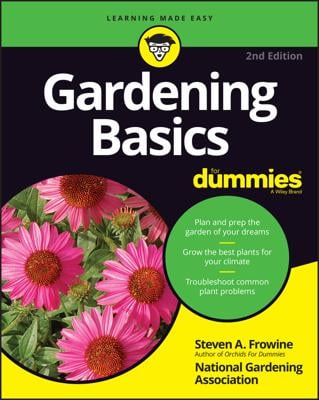Invasive plants are well-named: Just one small plant can turn quickly into an army that invades and conquers your whole garden. You'll find invasive plants among ornamentals, herbs, and climbers (vines).
Climbing and clambering invasives are especially notorious for exterminating everything in their path. Kudzu (Pueraria lobata), which the Chinese use to treat alcoholism, is known as “the vine that ate the South” for good reason. English ivy (Hedera helix) and wild grape (Vitis spp.) are two more vigorous vines that are used medicinally — ivy for controlling skin problems, grape as a diuretic — but both may be prescriptions for trouble in your garden.
Most nonvining herbs make congenial neighbors for the other occupants of your garden, but not all. Turn your back on spearmint, and it will overwhelm the lettuce and lay siege to the parsley. Set out a tidy clump of garlic chives, famous for pungent flavor and the power to ward off disease, and you’ll discover that even two or three unpicked flower heads give birth to hundreds of new plants.
Although the master list of universally incorrigible herbs is short, a list for your region may be much longer. If you yearn for herbs but don't want to plant an invasive, harvest some from a friend’s lawn or help a native plant society tidy up a park.
Be prepared to arm yourself as an “herban” guerilla if you plant any of the following invasives:
Artemisia (Artemisia spp.): Gardening books advise dividing this herb to create more. But artemisia, famous for thriving in poor soil, multiplies so rapidly on its own that you’ll need a calculator to add them up.
Comfrey (Symphytum officinale): Notice that Symphytum has the same root as the word sympathy. You’ll get neither sympathy nor comfort from comfrey when your plants multiply.
Costmary (Chrysanthemum balsamita): Rarely found in the wild, but in the garden, it increases fast enough to supply an entire city.
Fennel (Foeniculum vulgare): The seeds taste like anise, its leaves like dill. But watch out! Fennel has invaded farm fields in California and Virginia, where it’s now officially herbus non grata.
German, or annual, chamomile (Matricaria recutita): This herb self-sows almost anywhere. In Boulder, Colorado, chamomile sprouts in sidewalk cracks, a pleasant alternative to crab grass.
Herb-Robert (Geranium robertianum): Long associated with snakes, this plant slithers through the garden with ease, popping up where you least expect — or want — it.
Horseradish (Armoracia rusticana): You’re likely to leave behind a few bits of root when you dig horseradish, and every bit will turn into a new plant. Once you have it, you have it.
Mint (Mentha), all types: No self-respecting herb garden is complete without some type of mint, but pulling, digging, or tilling this ground-spreader may mean more plants, not fewer. To keep mint under control, grow it in deep, bottomless containers, either aboveground or sunk in the garden.
St. John’s wort (Hypericum perforatum): St. John’s wort is an herbal mood-lifter with a reputation for getting wildly out of hand in the garden. Keep an eye on it, or you may end up depressed.
Tansy (Tanacetum vulgare): Tansy can repel flies, ants, and other insects, but it can also be a pest in its own right.
Violet (Viola odorata): Shrinking violets? Don’t believe it. One day you have a demure clump of violets, the next week you can open a flower shop.
Yarrow (Achillea spp.): Multiplying without help may be okay for a plant that reputedly heals bruises, burns, wounds, and sores; conditions oily hair; and looks great in dried arrangements.
Some herbs (like mint) travel by sending out rootlike stems, or rhizomes, that scoot just under the soil surface, sprouting new plants as they go. Other herbs overrun their neighbors by scattering seeds (dandelion, anyone?) that sprout in the most awful conditions — such as the spaces between your patio stones — and without any help from you.
Consult other gardeners, local nurseries, and the local extension service about invasives. And if your neighbor brings you kudzu seedlings, find a nice way to say, “In a pig’s eye.”

